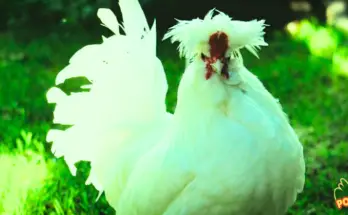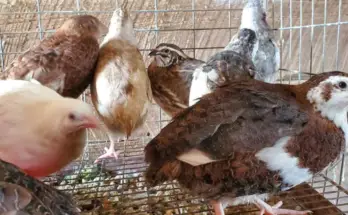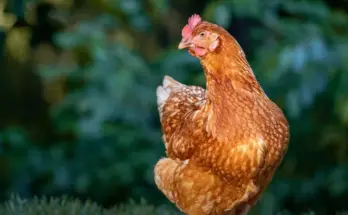Chicken Spurs: Understanding Their Purpose, Types, and Care
Chickens, domesticated for lots of years, have charming and once in a while unnoticed capabilities that play vital roles of their conduct, conversation, and self-protection. One such function is the hen spur – a small, bony protuberance positioned on the lower leg. While they could seem insignificant at the start look, chook spurs serve diverse purposes and provide insights into the natural conduct of those birds. In this newsletter, we will delve into the arena of chicken spurs, exploring their anatomy, features, sorts, and a way to care for them.
Anatomy of Chicken Spurs: A Closer Look
To recognize chicken spurs higher, it’s crucial to have a look at their anatomy. Spurs are growths observed on the again of a chook’s leg, just above the foot. Composed of bone and protected with a tough, keratinized sheath, spurs can vary in length and form depending at the breed, age, and gender of the chicken. In general, roosters have a tendency to have larger and extra distinguished spurs as compared to hens.
Chicken spurs are not present in chicks; they start to expand because the bird matures, commonly round 4 to 6 months of age. The increase of spurs is influenced by genetics, hormonal changes, and usual health. As a chicken a long time, its spurs may additionally keep growing, turning into greater said and curved.
Functions of Chicken Spurs: More Than Just a Pointy Appendage
Chicken spurs serve several vital capabilities that make a contribution to the fowl’s survival, social shape, and reproductive fulfillment. Understanding those capabilities gives valuable insights into the natural behavior of chickens.
1. Defense Mechanism:
One of the number one functions of chicken spurs is self-defense. In the wild, chickens face various threats from predators, and their spurs play a important position in fending off attackers. When faced via a danger, a bird may additionally use its spurs to deliver fast and sharp kicks, potentially injuring or deterring the predator. This protecting conduct is particularly outstanding in roosters, which use their larger spurs to establish dominance and guard the flock.
2. Establishing Dominance:
In a flock, social hierarchies exist, and roosters use their spurs to set up and maintain dominance. During disputes over food, buddies, or territory, roosters can also engage in sparring suits, the use of their spurs to say authority. The size and energy of a chicken’s spurs can influence its role within the flock’s pecking order.
3. Mating Rituals:
Chicken spurs additionally play a function in mating rituals. Roosters may additionally use their spurs for the duration of courtship presentations, showcasing their physical prowess to draw hens. The presence of well-evolved spurs may be a signal of reproductive fitness, and hens may additionally preferentially select mates with extra prominent spurs.
4. Communication:
While not as overt as different forms of communique, fowl spurs can convey diffused signals within the flock. A rooster’s posture and the visibility of its spurs can also signal its mood or reason to other chickens, assisting to maintain order inside the institution.
Types of Chicken Spurs: From Tiny Nubs to Formidable Weapons
Chicken spurs are available in diverse shapes and sizes, stimulated by using elements together with genetics, breed, and age. While all spurs serve the equal fundamental features, the differences in their appearance may be hanging.
1. Short Spurs:
Some chickens, specifically certain breeds and hens, have brief and comparatively inconspicuous spurs. These shorter spurs are nevertheless useful however are less prominent and less probably to purpose harm at some point of sparring or protecting maneuvers.
2. Long Spurs:
Roosters, in particular the ones of larger and greater aggressive breeds, often expand long and formidable spurs. These may be curved or straight, and their period can exceed several inches in some instances. Long spurs are mighty guns in both self-protection and setting up dominance inside the flock.
3. Curved Spurs:
The curvature of a bird’s spur can range, with some having directly spurs while others showcase a noticeable curve. The curvature can have an impact on the effectiveness of the spur in delivering precise kicks throughout sparring or protecting movements.
4. Spur Spurs:
In a few breeds, chickens may additionally develop a couple of spurs on a unmarried leg, a phenomenon referred to as spur spurs. While uncommon, this incidence adds an extra layer of complexity to the observe of bird spurs.
Caring for Chicken Spurs: Tips for a Healthy Flock
Maintaining the fitness and nicely-being of your chickens consists of being concerned for their spurs. While spurs are a natural and useful a part of a chicken’s anatomy, there are a few issues to hold in thoughts to ensure their right improvement and save you any capacity problems.
1. Regular Inspections:
Incorporate normal inspections of your chickens’ spurs into your routine fitness exams. Look for signs and symptoms of injury, contamination, or strange boom. If you note any abnormalities, talk over with a veterinarian for appropriate care and guidance.
2. Trimming:
In some cases, specially with long and curved spurs, it could be necessary to trim them to prevent injuries. Trimming have to be performed carefully and with the proper equipment to keep away from causing harm to the chook. Consult with a rooster expert or veterinarian if you are uncertain about the method.
3. Providing Proper Nutrition:
A properly-balanced and nutritious food plan is critical for the general health of your chickens, including the improvement in their spurs. Ensure that your flock gets a food regimen rich in important nutrients and minerals to aid bone health and spur growth.
4. Addressing Injuries Promptly:
If a fowl sustains an harm to its spurs, it is critical to cope with it promptly. Clean any wounds carefully, observe antiseptic if vital, and screen the fowl for symptoms of infection. In excessive instances, are seeking expert veterinary care.
5. Providing Adequate Space:
To reduce the threat of injuries from sparring or aggressive conduct, make sure that your chickens have enough space to transport freely. Overcrowded conditions can lead to strain and territorial disputes, growing the probability of injuries regarding spurs.
Conclusion:
While chicken spurs would possibly look like a small and inconspicuous part of a bird’s anatomy, they play great roles within the chook’s survival, social structure, and reproductive success. Understanding the capabilities, types, and proper care of chicken spurs can deepen your appreciation for those charming creatures and make a contribution to the overall properly-being of your flock. Whether you are a pro rooster fanatic or a beginner fowl keeper, taking the time to observe and respect the intricacies of bird spurs can enhance your reference to those terrific birds.



